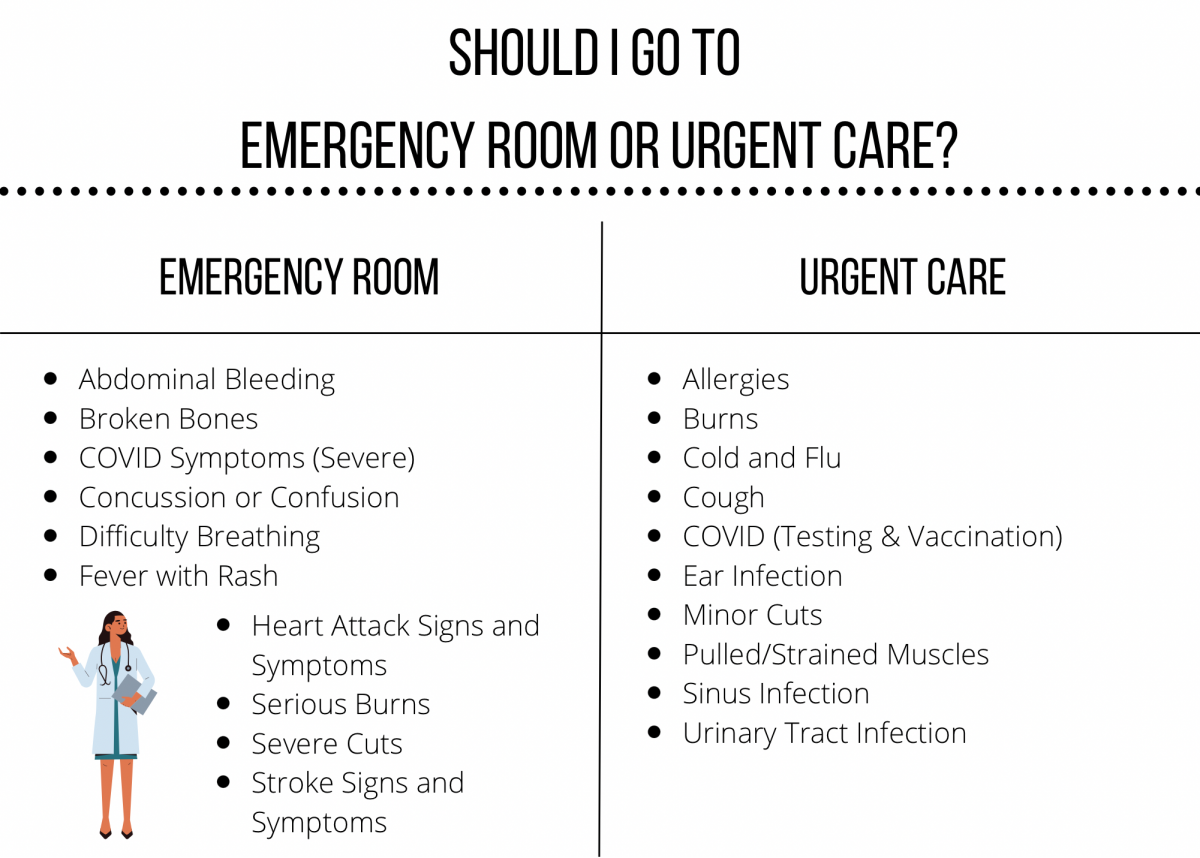Seeking medical help in the ER vs. urgent care
 In a typical year, 130 million Americans visit an emergency department. The reasons are many: Your newborn spikes a fever in the middle of the night. You slip from a ladder completing a DIY project. Your spouse wakes up with sudden chest pain.
In a typical year, 130 million Americans visit an emergency department. The reasons are many: Your newborn spikes a fever in the middle of the night. You slip from a ladder completing a DIY project. Your spouse wakes up with sudden chest pain.
Making the decision to visit an emergency room can be among the most impactful healthcare decisions anyone will make in their life. In considering wait times, cost and COVID-19 concerns the decision can become complicated.
Non-hospital-based emergency departments and standalone urgent care facilities have become more popular In recent years.
These facilities complement traditional primary care physicians and have added options, and some confusion, to the typical family’s healthcare choices.
Knowing your options can help you get the right type of care right away.
Key Differences Between the ER and Urgent Care
While urgent care is an excellent option in certain situations, it can be difficult to determine when to visit an urgent care facility versus the ER. It can be helpful to think of urgent care as a middle ground between your primary care doctor and an ER.
Urgent care facilities offer similar services to a primary care physician, with the speed and flexibility of an emergency room.
Unlike most primary care physicians, urgent care centers offer a walk-in option. They are typically open seven days a week and sometimes feature 24-hour service. Most urgent cares also offer limited imaging technology, such as X-rays.
One difference is that urgent care facilities are not equipped with the same, advanced imagining technologies and lab services that ERs use to treat life-threatening conditions. ER teams also have access to specialized physicians within their connected hospital. For example, if you are experiencing heart attack symptoms, you would want to go somewhere with a cardiologist on staff. Life-threatening symptoms should prompt an ER visit over urgent care.
Use the chart below to help determine which option is right for you based on your symptoms. Always remember, if you think your injury or condition might be life- or limb-threatening, call 911 or get to the nearest ER immediately.

ER Services at the South Texas Health System
The ER teams at the South Texas Health System Hospitals are ready to provide you with exceptional emergency care. If you are experiencing a medical emergency, call 911 or get to the nearest emergency room.
Learn more about ER services at South Texas Health System Children’s
Learn more about ER services at South Texas Health System Edinburg
Learn more about ER services at South Texas Health System Heart
Learn more about ER services at South Texas Health System McAllen
